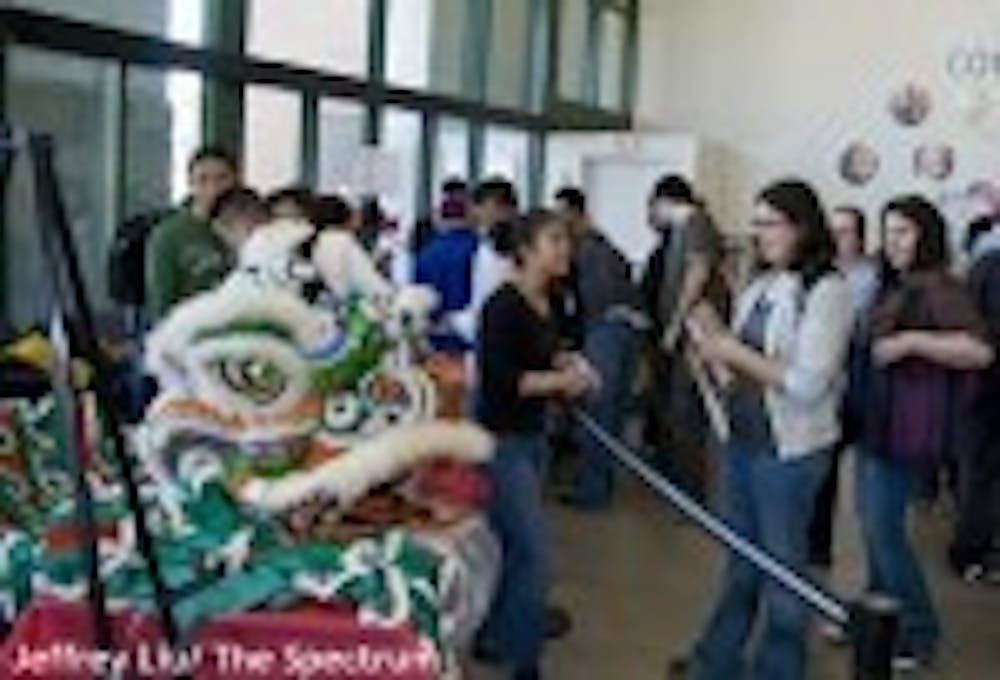While protesters outside of Capen Undergraduate Library debated the situation between China and Tibet, the Student Union was filled with students unanimously celebrating Asian culture Wednesday. The 12th annual Asian Cultural Bazaar kicked off at noon exposing students to the sights, sounds and tastes of Asia. Students gathered to paint Japanese fans, sample Asian cuisine and watch Chinese and Filipino performances while dancing to Middle Eastern music.
Rafael Rodriguez, one of the bazaar's chief coordinators, said that the event is meant to expose students to different Asian cultures.
A fundamental part of this celebration is the entertainment, crafts, and traditional food, but the greater focus is upon learning and understanding cultural diversity.
"We took a broader perspective on what 'Asian' meant and we represented that with the food, music, and through some of the games we are playing. Dominoes has both Arabian and Chinese roots," Rodriguez said. "There is no way to attend the bazaar and not learn something new." The Korean Folk Art Club took advantage of the weather by performing a routine outside the union with traditional folk drums and other instruments. The Combined Martial Arts Club impressed students with their synchronized moves and swift techniques when they performed various styles of martial arts such as Aikido and Tai Chi.
Members of the Filipino-American Student Association performed the Kappa Malong-Malong, a traditional Filipino-Muslim dance. The tribal performance depicted a group of women going through the motions of getting dressed with a malong, a colorful piece of cloth that is a characteristic garment of the region. "I think this bazaar is a good thing because it introduces students to new cultures and also eliminates some ignorance regarding cultures from all around the world," said Sean Solitaire, a junior computer science major. Students lined up to get a taste of Chinese, Indian and other Asian cuisine. The free food included spring and egg rolls, curry chicken, chicken tandoori, fried rice, and fortune cookies. Along with traditional cuisine and entertainment, students interactively participated in the arts and crafts portion of the bazaar. Students had the opportunity to create origami, an ancient Japanese art of paper folding, and receive henna tattoos, a form of skin decoration native to South Asia and the Middle East.
"We hope to open up students' cultural tolerance," Rodriguez said. "We want students to see and learn something different that they didn't know. That's what college is all about: having new experiences, getting involved, and learning something new." Kristen Mazurkiewicz, a freshman pharmaceutical science major, took advantage of the free tattoos. "I wasn't aware that henna was considered an Asian thing," Mazurkiewicz said. "I love henna and this is the coolest thing here because they let you draw a henna tattoo on your own self. I'm definitely glad I stopped in today."
According to Rodriguez, the event was made possible by combined efforts, but it was the student volunteers who helped make the bazaar stand out from the rest. "Student involvement has increased since previous bazaars," Rodriguez said. "Students actually took ownership, a hands-on approach, voicing what they want to experience at the bazaar."
Abdullateef Alfozaie, a junior electrical engineering major, believes events like the Asian Bazaar is crucial for a diverse campus like UB. "There is such a large base of international students here, and so activities like these are crucial for students from all different background to come together and connect with one another," Alfozaie said.





